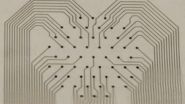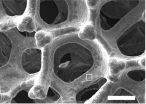Study finds imaging tool to diagnose heart conditions is more accurate and safer
2015-03-17
(Press-News.org) New heart imaging technology to diagnose coronary heart disease and other heart disorders is significantly more accurate, less expensive and safer than traditional methods, according to a new study by researchers from the Intermountain Medical Center Heart Institute in Salt Lake City.
Researchers at the Intermountain Medical Center Heart Institute compared Single Photon Emission Computed Tomography (SPECT), currently the most commonly used imaging diagnostic tool, with a new imaging technology -- coronary-specific Positron Emission Tomography (cardiac PET/CT).
They found the differences were dramatic.
Researchers found that cardiac PET/CT imaging diagnosed heart problems with certainty 88 percent of the time, while SPECT imaging gave a clear diagnosis only 30 percent of the time.
Results of the study were presented at the American College of Cardiology 64th annual Scientific Session in San Diego.
"We've found that cardiac PET/CT scans offer higher accuracy and much better image quality," said Kent Meredith, MD, cardiologist at the Intermountain Medical Center Heart Institute and the lead researcher of the study. "We have much more confidence in the results and there is far less radiation exposure for patients."
When the imaging procedure gives uncertain results, physicians must then use alternative invasive diagnostic techniques like coronary angiograms and cardiac catheters. Researchers found that cardiac PET/CT scans reduced the need for these additional procedures by more than 50 percent.
In addition to higher image quality and accuracy, cardiac PET/CT also eliminates most of the drawbacks of SPECT, which had difficulty scanning patients who were female, obese, or had prominent liver or GI tract activity. Cardiac PET/CT can easily scan all of those patients, Dr. Meredith said.
Both the SPECT and cardiac PET/CT scanners use a radioactive tracer to create an image of the heart. SPECT imaging emits a single electron with relatively low energy. Because the energy is low, it takes more of the radioactive tracer to make an image, and the image isn't very clear. In addition to a higher dose of radiation, the SPECT radioactive tracer has a very long half-life and will remain in the patient's system for up to two days.
Cardiac PET/CT imaging uses two high-energy electrons for the radioactive tracers. Since the electrons are high-energy, a much smaller dose is required and the image quality is far better. The half-life of the radioactive tracer is only two minutes and the radiation is completely out of the patient's system within 20 minutes.
For years, physicians have primarily used SPECT scans to diagnose coronary artery disease and other heart problems. However, use of cardiac PET/CT imaging is growing.
To verify the difference between cardiac PET/CT and SPECT scans for diagnosing heart problems, researchers compared outcomes of patients at the Intermountain Medical Center Heart Institute who were scanned using the SPECT scanner in 2012 to those scanned by the PET scanner in 2013. They screened from a pool of 1,000 patients from each year, and narrowed it down to 197 SPECT patients and 200 cardiac PET/CT patients who had both an imaging test and a heart catheter.
The study also looked at how often each scan falsely diagnosed a patient with a heart condition. Researchers found that the SPECT gave a false positive about six percent of the time, while the cardiac PET/CT imaging never gave a single false positive during the study period.
"The results of the cardiac PET/CT imaging were very dramatic. A significant improvement over SPECT imaging," said Dr. Meredith.
The more accurate results offered by cardiac PET/CT imaging translates into a greatly reduced need for invasive diagnostic procedures, which pose more risks to patients and are more expensive. That means cardiac PET/CT imaging eliminates unnecessary invasive procedures, which saves patients money and reduces their risks of complications and infections.
Using the cardiac PET/CT also reduces the amount of radiation patients are exposed to by a factor of 10. SPECT scans typically give patients a 30 milliSeivert dose of radiation while the dose from the cardiac PET/CT is just 2 milliSeiverts.
INFORMATION:
ELSE PRESS RELEASES FROM THIS DATE:
2015-03-17
A recently published global genome study that used the data-intensive Gordon supercomputer at the San Diego Supercomputer at the University of California, San Diego, has researchers rethinking how avian lineages diverged after the extinction of the dinosaurs.
The four-year project, called the Avian Genome Consortium and published in the journal Science, resulted in a new family "tree" for nearly all of the 10,000 species of birds alive today by comparing the entire DNA codes (genomes) of 48 species as varied as parrot, penguin, downy woodpecker, and Anna's hummingbird. ...
2015-03-17
SAN DIEGO (March 16, 2015) -- Patients who experience the deadliest form of heart attack--ST segment elevation myocardial infarction (STEMI)--and suffer from substantial narrowing in multiple heart arteries may benefit from receiving angioplasty in constricted arteries not affected by the heart attack, thereby reducing the need for future angioplasty, according to research presented at the American College of Cardiology's 64th Annual Scientific Session.
The study is the largest prospective, controlled trial to evaluate whether patients should receive preventive angioplasty, ...
2015-03-17
OAKLAND, Calif. -- Specific system-level factors controlled by health care systems - including prescriptions with a medication supply greater than 90 days, mail-order pharmacy use, and lower copayments and out-of-pocket maximums - nearly doubled the likelihood that patients adhered to prescribed heart and diabetes medications, according to a new study published in the journal Medical Care.
"This study is the first to look at all four of these system-level factors at once in the senior population," said Julie A. Schmittdiel, PhD, research scientist with the Kaiser Permanente ...
2015-03-17
If you're a fan of food television, it's fine to be entertained by the programming, but if you take recipes for the rich meals the networks favor into your own kitchen, you're at risk of putting on pounds, according to a study just published online by the journal Appetite.
"The message is clear," said Lizzy Pope of the University of Vermont, the study's lead author. "Food TV should be a viewing experience only, not a cooking experience."
The study asked 501 women, aged 20 to 35, where they obtained information about new foods, how frequently they cooked from scratch, ...
2015-03-17
Healthy bone is continuously involved in a dynamic process that includes bone deposition and bone resorption. However, when a person has cancer that spreads to the bone and bone marrow, the tissue becomes increasingly fragile, and this process is disrupted, usually leading to increased bone resorption.
In an early online edition in advance of publication in the International Journal of Cancer, investigators at Children's Hospital Los Angeles reported a surprising discovery - when neuroblastoma (NB) cells metastasize to the bone, there initially occurs an increase in bone ...
2015-03-17
Berkeley -- Engineers at the University of California, Berkeley, are developing a new type of bandage that does far more than stanch the bleeding from a paper cut or scraped knee. Thanks to advances in flexible electronics, the researchers, in collaboration with colleagues at UC San Francisco, have created a new "smart bandage" that uses electrical currents to detect early tissue damage from pressure ulcers, or bedsores, before they can be seen by human eyes - and while recovery is still possible.
"We set out to create a type of bandage that could detect bedsores as ...
2015-03-17
UNSW Australia scientists have developed a highly efficient oxygen-producing electrode for splitting water that has the potential to be scaled up for industrial production of the clean energy fuel, hydrogen. The new technology is based on an inexpensive, specially coated foam material that lets the bubbles of oxygen escape quickly.
"Our electrode is the most efficient oxygen-producing electrode in alkaline electrolytes reported to date, to the best of our knowledge," says Associate Professor Chuan Zhao, of the UNSW School of Chemistry.
"It is inexpensive, sturdy and simple ...
2015-03-17
Tuesday, March 17, 2015. Just like milk and many other foods, blood used for transfusions is perishable. But contrary to popular belief, new research shows that blood stored for three weeks is just as good as fresh blood - findings published today in the New England Journal of Medicine.
The large clinical trial provides reassuring evidence about the safety of blood routinely transfused to critically ill patients. Supported by the Canadian Critical Care Trials Group and countless nurses, blood bank technologists, transfusion medicine and critical care physicians, Drs. ...
2015-03-17
Ann Arbor, MI, March 17, 2015 -- Suicide is responsible for more than 36,000 deaths in the United States and nearly 1 million deaths worldwide annually. In 2009, suicides surpassed motor vehicle crashes as the leading cause of death by injury in the U.S. A new study published in the American Journal of Preventive Medicine analyzes the upward trend of suicides that take place in the workplace and identifies specific occupations in which individuals are at higher risk. The highest workplace suicide rate is in protective services occupations (5.3 per 1 million), more than ...
2015-03-17
(Chicago) - Just as humans will travel to their favorite restaurant, chimpanzees will travel a farther distance for preferred food sources in non-wild habitats, according to a new study from scientists at Chicago's Lincoln Park Zoo that publishes on March 17 in the journal PeerJ.
Chimpanzees at Lincoln Park Zoo prefer grapes over carrots. Previous research at the zoo provided that insight into food preferences. Now, a 15-month study, led by Lydia Hopper, PhD of the Lester Fisher Center for the Study and Conservation of Apes at Lincoln Park Zoo, suggests that the apes ...
LAST 30 PRESS RELEASES:
[Press-News.org] Study finds imaging tool to diagnose heart conditions is more accurate and safer



